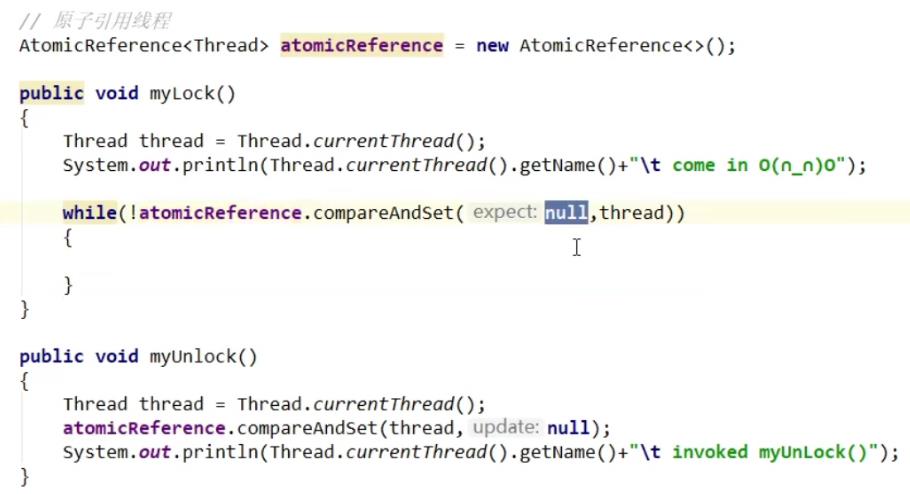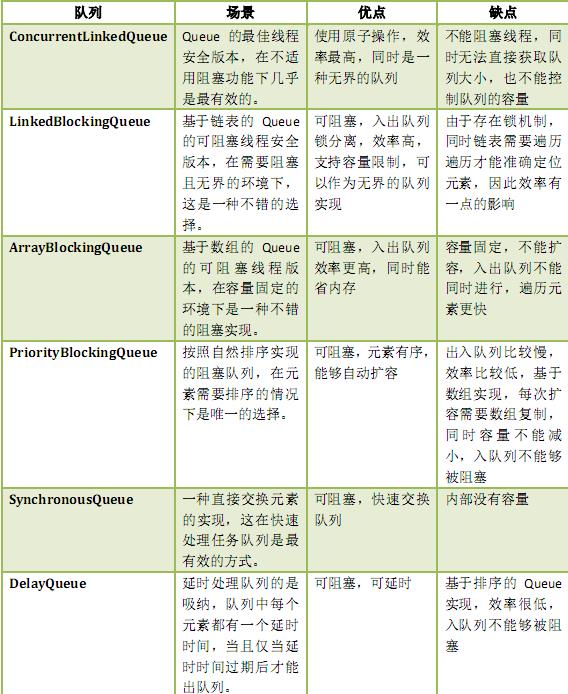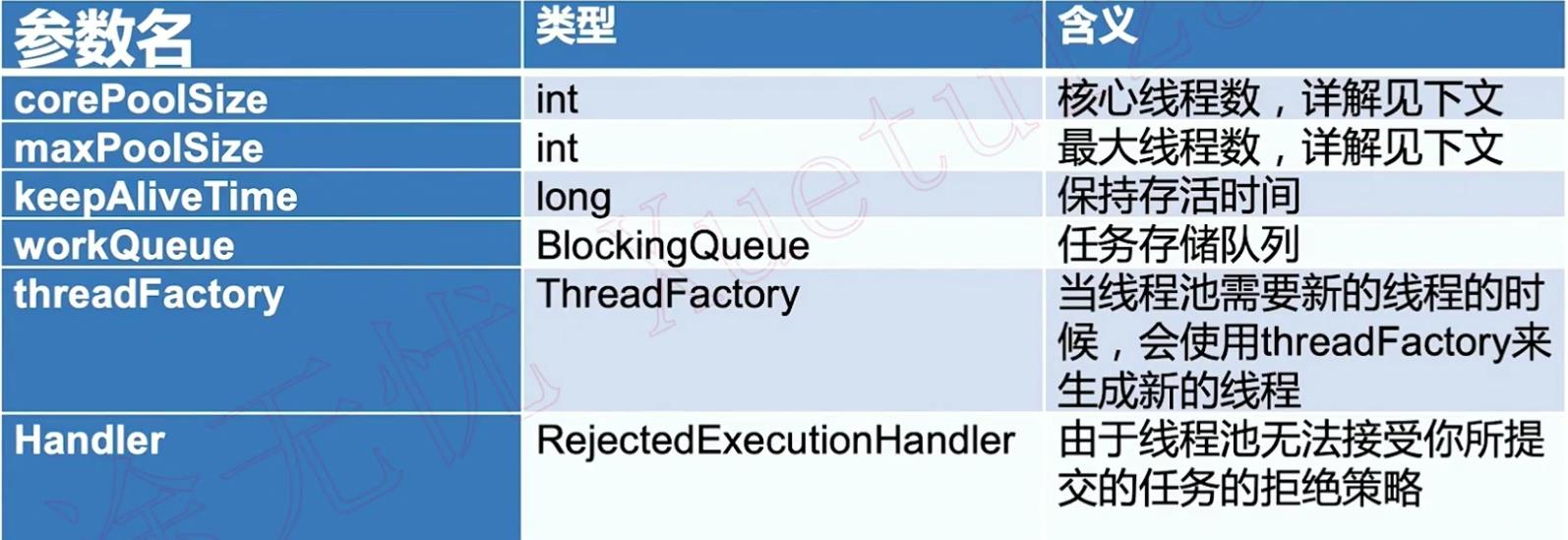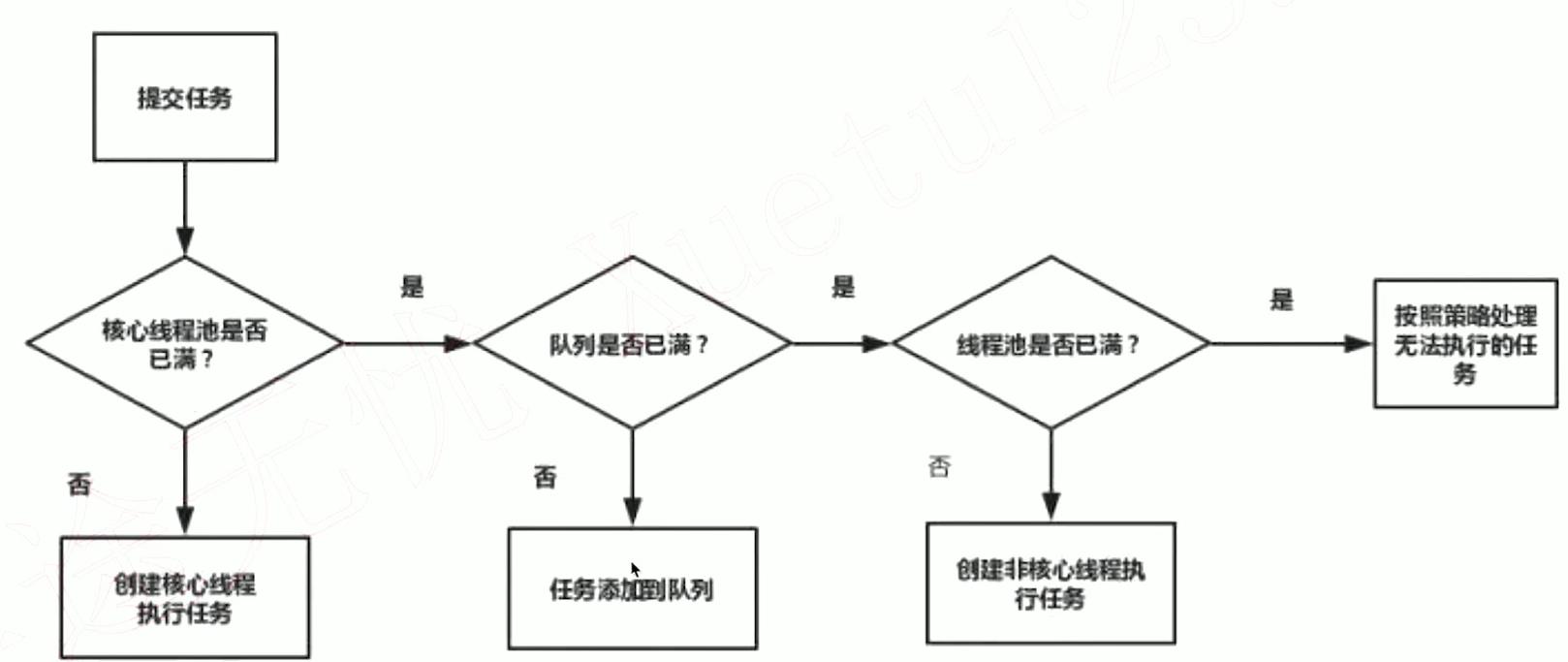Day486&487&488.尚硅谷之高频重点面试题② -面经
Posted 阿昌喜欢吃黄桃
tags:
篇首语:本文由小常识网(cha138.com)小编为大家整理,主要介绍了Day486&487&488.尚硅谷之高频重点面试题② -面经相关的知识,希望对你有一定的参考价值。
高频重点面试题②
一、说说锁
-
公平锁
- 每个线程获取锁的时候,会根据维护的等待队列去一个一个
按次序获取锁 - 吞吐量大
- 每个线程获取锁的时候,会根据维护的等待队列去一个一个
-
非公平锁
-
并不会根据声明的顺序去严格按照顺序获取锁,会“
插队”,尝试失败就会再采用类似公平锁机制 -
会出现
饥饿等情况
-
-
可重入锁(递归锁)
锁里套锁,直接获取锁内锁的锁
-

-
避免了死锁
-
-
自旋锁
尝试获取锁的线程不会立刻阻塞,而是
采用循环的方式去获取锁,通过循环代替阻塞
- 减少线程上下文切换
- 消耗CPU资源
- 手写自旋锁

-
写锁(独占锁)
只能被一个线程所持有
-
读锁(共享锁)
可被多个线程所持有

二、CountDownLatch/CyclicBarrier/Semaphore使用过吗?
https://achang.blog.csdn.net/article/details/117935179
-
CountDownLatch倒计时门栓
倒数count为0后,执行await()方法阻塞的线程就发车
所有人出了门,保安才锁门

-
CyclicBarrier循环栅栏
满足数量条件,就发车
人到齐了,就开会
-
Semaphore信号量
“许可证”,数量
有限
三、阻塞队列知道吗?

- 为什么用?有什么好处?

- 知道哪些实现类吗?


- API

- 手写传统版生产者消费者模式
/******
@author 阿昌
@create 2021-05-22 20:58
*******
* 用wait/notify来实现 生产者消费者模式
*/
public class ProducerConsumerModel
//主函数
public static void main(String[] args)
EventStorage eventStorage = new EventStorage();
Consumer1 consumer = new Consumer1(eventStorage);
Producer1 producer = new Producer1(eventStorage);
Thread threadConsumer = new Thread(consumer);
Thread threadProducer = new Thread(producer);
threadConsumer.start();
threadProducer.start();
//生产者
class Producer1 implements Runnable
private EventStorage storage;
public Producer1(EventStorage storage)
this.storage = storage;
@Override
public void run()
for (int i = 0; i < 100; i++)
storage.put();
//消费者
class Consumer1 implements Runnable
private EventStorage storage;
public Consumer1(EventStorage storage)
this.storage = storage;
@Override
public void run()
for (int i = 0; i < 100; i++)
storage.take();
//队列
class EventStorage
private int maxSize;
private LinkedList storage;
public EventStorage()
this.maxSize=10;
storage = new LinkedList<>();
//生成产品
public synchronized void put()
//如果满了
while (storage.size()==maxSize)
try
wait();
catch (InterruptedException e)
e.printStackTrace();
//如果没满
storage.add(new Date());
System.out.println("生产者生产了产品,仓库里有了"+storage.size()+"个产品");
notify();
//消费产品
public synchronized void take()
//如果空了
while (storage.size()<=0)
try
wait();
catch (InterruptedException e)
e.printStackTrace();
//如果没空
System.out.println("消费者消费了产品,拿到了"+storage.poll()+",现在仓库还剩下"+storage.size());
notify();
- 生产者消费者模式阻塞队列版
public class ConsumerProducer
static class MySource
private volatile boolean flag = true;
private BlockingQueue<String> blockingQueue;
private AtomicInteger atomicInteger = new AtomicInteger();
public MySource(BlockingQueue<String> queue)
this.blockingQueue = queue;
public void prod() throws InterruptedException
String data = null;
while (flag)
data = atomicInteger.incrementAndGet()+"";
if (blockingQueue.offer(data,2L, TimeUnit.SECONDS))
System.out.println("生产对象,并插入对类");
Thread.sleep(1000);
this.flag = false;
System.out.println("flag=false,停止生产...");
public void consume() throws InterruptedException
while (flag)
String data = blockingQueue.poll(2L, TimeUnit.SECONDS);
if (data != null || null != "")
System.out.println("消费对象:"+data);
else
this.flag = false;
System.out.println("消费者停止消费");
Thread.sleep(1000);
public void clear()
this.flag = false;
public static void main(String[] args) throws InterruptedException
ArrayBlockingQueue<String> queue = new ArrayBlockingQueue<String>(10);
MySource mySource = new MySource(queue);
new Thread(new Runnable()
@Override
public void run()
try
mySource.prod();
catch (InterruptedException e)
e.printStackTrace();
).start();
new Thread(new Runnable()
@Override
public void run()
try
mySource.consume();
catch (InterruptedException e)
e.printStackTrace();
).start();
Thread.sleep(3000L);
System.out.println("主线程停止操作");
mySource.clear();
- Synchronized和Lock有什么区别?

四、线程池用过吗?谈谈你的理解
https://achang.blog.csdn.net/article/details/117606362
-
为什么需要使用线程池
- 反复创建线程开销大
- 过多的线程会导致内存消耗
-
线程池的好处
- 加快响应速度
- 便于线程的管理控制,方便数据统计
- 合理利用CPU和内存
-
线程池构造函数的参数

- 流程图

-
是否需要增加线程的判断
- corePoolSzie
- workQueue
- maxPoolSize
-
说说线程池底层原理----也就是线程池创建7大参数


- 线程池的拒绝策略,请你谈谈

- 为什么工作中尽量不使用Executors去创建线程池?

- 线程池合理配置数
- CPU密集型
- CPU核数*2
- IO型
- CPU核数/ 1 * 0.9
- CPU密集型

五、谈一谈死锁
https://achang.blog.csdn.net/article/details/117431165
- 死锁简单的定位方式可通过
- jstack xxx + jps
以上是关于Day486&487&488.尚硅谷之高频重点面试题② -面经的主要内容,如果未能解决你的问题,请参考以下文章